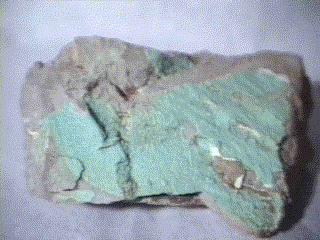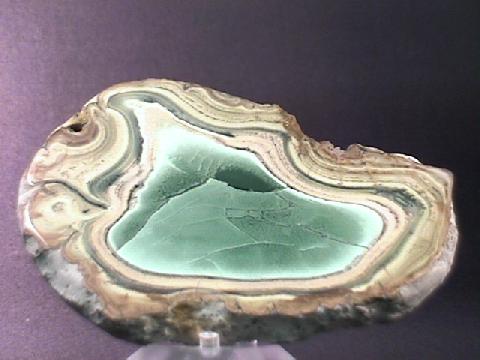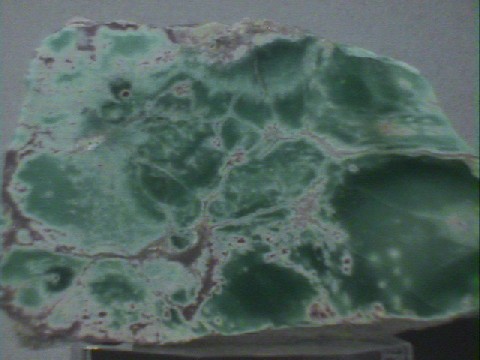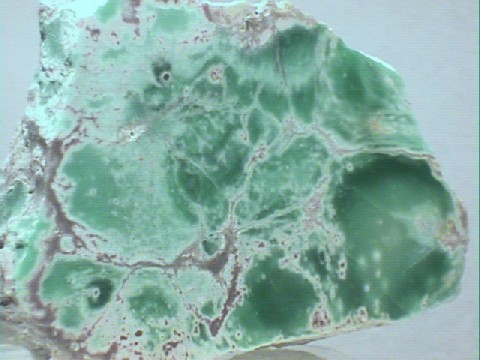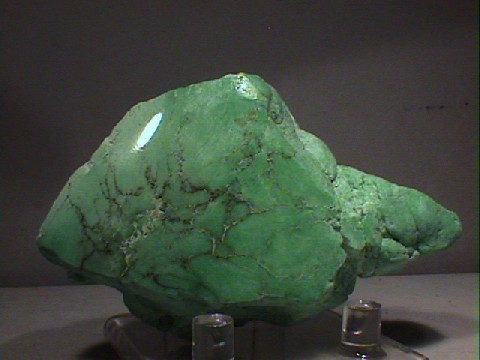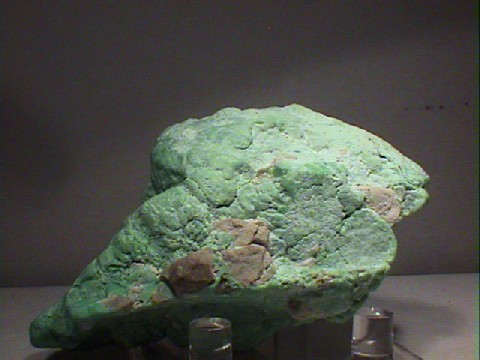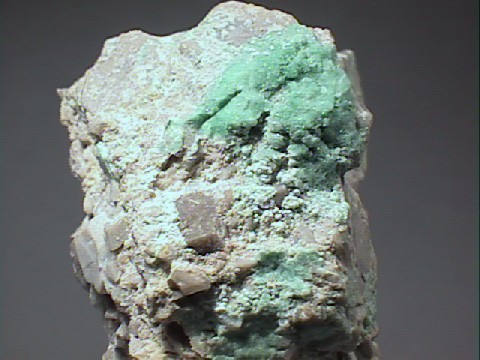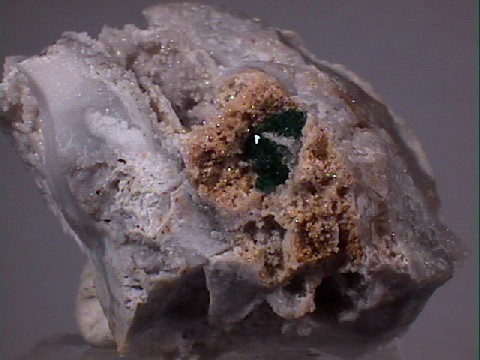 THE MINERAL VARISCITE
THE MINERAL VARISCITE
- Chemistry: AlPO4-2H2O, Hydrated Aluminum Phosphate
- Class: Phosphates
- Group: Variscite
- Uses: mineral specimens and ornamental stone applications
- Specimens
Variscite is a relatively rare phosphate mineral that is sometimes confused with
turquoise.
It is usually greener, however, than turquoise.
Variscite is sometimes used as a semi-precious stone and can make distinctive color patterns that are very attractive.
Occassionally it is altered into other phosphate minerals.
This can occur in what were perhaps
weak layers of a nodule since only portions of the variscite nodules are altered.
The most common alteration mineral is
crandallite, CaAl
3(PO
4)
2(OH)
5-H
2O, and gives some nodules a yellow or white layer.
PHYSICAL CHARACTERISTICS:
- Color is light green to emerald green, sometimes bluish-green or colorless.
- Luster is vitreous or waxy.
- Transparency specimens are translucent.
- Crystal System is orthorhombic; 2/m2/m2/m
- Crystal Habits include nodules, fine grain masses, and crusts.
- Cleavage is normally not applicable, but should be good in one direction, poor in another
- Fracture is conchoidal, splintery, uneven.
- Hardness is variable from 3.5 - 5
- Specific Gravity is approximately 2.57 (average)
- Streak is white.
- Associated Minerals are apatite,
limonite, chalcedony,
crandallite, wardite
and other secondary phosphate minerals.
- Other Characteristics: alteration to other phosphate minerals causes a shrinkage, yielding gaps between variscite and these other minerals.
- Notable Occurances include Fairfield, Utah; Germany; Australia and Brazil.
- Best Field Indicators are color, habit, associations, density and luster.
 THE MINERAL VARISCITE
THE MINERAL VARISCITE
